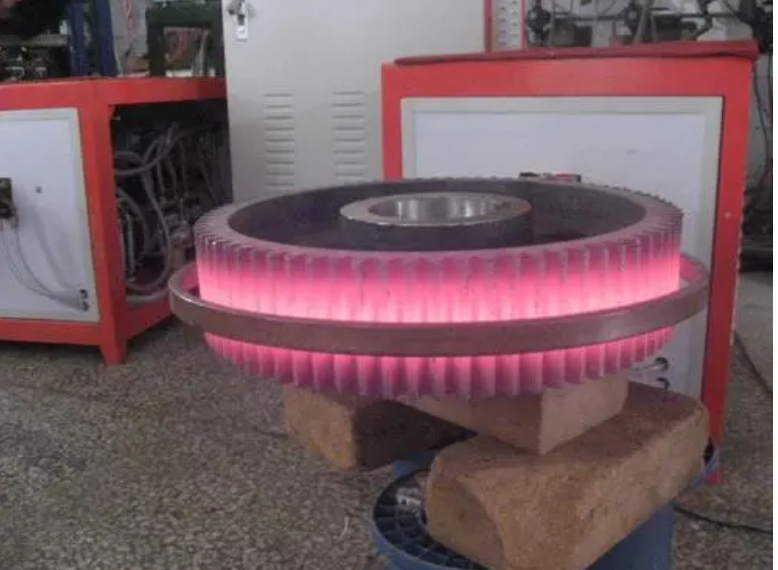- 23
- Sep
What are the commonly used tables in the formulation of induction heat treatment processes?
What are the commonly used tables in the formulation of induction heat treatment processes?
Commonly used tables in the formulation of induction heat treatment processes are:
(1) Parts record card This is a form for craftsmen to try out specifications, see the table.
Part number or part name:
Power supply and quenching machine number or name:
frequency Hz; voltage V; power kW
| Quenching part: | |||
| Transformation ratio of quenching transformer | |||
| Anti-current coil turns | Coupling (scale) | ||
| Electric capacity/kvar | Feedback (scale) | – | |
| Sensor number | Sensor number | ||
| Generator no-load voltage/V | Anode no-load voltage/kV | ||
| Generator load voltage/V | Anode load voltage/kV | ||
| Generator current/A | Anode current/A | ||
| Effective power/kW | Gate current/A | ||
| Power factor | Loop voltage/kV | ||
| Heating time/s or kW • s | Heating time/s or kW • s | ||
| Pre-cooling time/s | Pre-cooling time/s | ||
| Cooling time/s | Cooling time/s | ||
| Water spray pressure/MPa | Water spray pressure/MPa | ||
| Quenching cooling medium temperature / none | Quenching cooling medium temperature/Y | ||
| Mass fraction of quenching cooling medium name (%) | Mass fraction of quenching cooling medium name (%) | ||
| Moving speed/ (mm/s) | Moving speed/ (mm/s) | ||
After the craftsman debugs the part, enter the relevant parameters in this table, and also enter the problems found during the debugging specification in the table. The left row is used for intermediate frequency, and the right row is used for high frequency.
(2) Induction heat treatment parts analysis and inspection card (see Table 3-10) This is a comprehensive table that includes component material analysis, surface hardness, depth of hardened layer, and macro and microstructure inspection results. According to the results and conclusions of this table, the craftsperson can formulate the parameters of the craft card.
Table 3-10 Analysis and inspection card of induction heat treatment parts
| 1. Part material composition (mass score) | (%) | ||||||||
| C | Mn | Si | S | P | Cr | Ni | W | V | Mo |
Part surface hardness HRC:
Hardened layer depth/mm
(Draw the curve of section hardness)
Macroscopic hardened layer distribution:
(Photo or sketch to scale)
Microstructure and grade:
test results:
(3) Induction heat treatment process card is generally divided into two pages, the first page includes parts materials, technical requirements, schematic diagrams, process routes and procedures, etc. The process mainly includes induction hardening, intermediate inspection, tempering, inspection (hardness, appearance, magnetic inspection, regular spot inspection of metallographic structure, etc.). If the parts need to be straightened after quenching, the straightening process can also be included in this card.
The main content of the second page is the process parameters. This table can be used for high and intermediate frequencies. The main content of the process parameters is similar to that of the record card.
1) It must be noted that the schematic diagram of the part is very important. The quenched part can be drawn partially with reference to the product drawing, and the size needs to be added with the amount of grinding, because the product drawing is the finished product size, and the process card is the process size.
2) The hardened area should be marked with dimensions and tolerances.
3) The inspection items should have a percentage, such as 100%, 5%, etc.
4) The relative position of the workpiece and the effective circle must be marked beside the sketch, and the relative position of the starting point and the ending point of the scanning hardened part should be marked.

